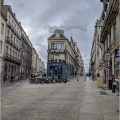On the banks of the Loire, east of the Atlantic, lies the city of Nantes, the birthplace of surrealism and Jules Verne. France’s largest harbor in the eighteenth century, Nantes experienced deindustrialization when the shipyards closed and the water was diverted, drastically altering the landscape, changing the economy, and creating the Isle of Nantes. In 2007, with the vision of François Delaroziere, it became the Isle of Machines.
François Delaroziere has always had a passion for nature, drawing, and fabrication, and in 1991, began bringing mechanical animals to life with the French theater company Royal de Luxe, also based in Nantes. Together, their work culminated in The Sultan’s Elephant, a 42 ton mechanical elephant designed by Delaroziere that toured the world in 2005-2006. Shortly thereafter, Delaroziere left Royal de Luxe to found his own company, La Machine, and, collaborating with Pierre Orefice, created Les Machines de l’île. Their first work was The Great Elephant, an inexact replica of The Sultan’s Elephant (which was destroyed, reputedly by the theater company because they were sick of doing elephant shows). This 45 ton behemoth is bigger and better than its predecessor, primarily because now it can carry passengers for a ride.
And I was going to ride that ride.
I was determined. The first itinerary I made for this trip was, in retrospect, brutal: too many stops with not enough time in any of them to make the act of going there worthwhile. I discarded it in favor of a plan that involved a bit less sightseeing in France’s exciting train stations, but no matter how the map shifted, my top priority was going to Nantes and riding that elephant. Ultimately, we spent two days in the city and visited the Isle of Machines both days.
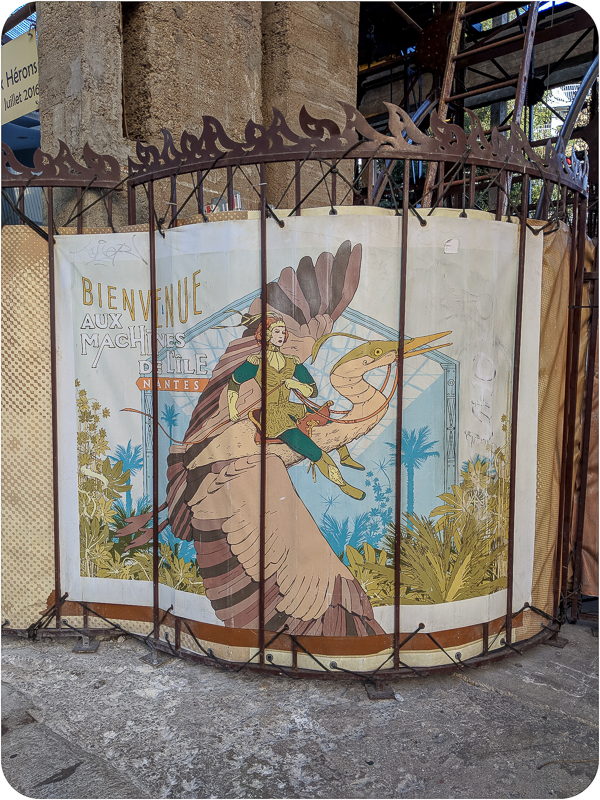
On the first day, we peered into the workshop (where they are currently working on their “city in the sky”, The Heron Tree (l’Arbre aux Hérons), a new attraction with anticipated release in 2022), walked up into the prototype branch of l’Arbre (where they’re currently figuring out what types of plants will thrive in the substrate they’ve chosen), and, finally, rode that elephant. And that elephant was astounding. Made in François Delaroziere’s typical style, of natural materials when possible, wood and leather, things that age and change and have unique character, and with its mechanical components bare: part of the spectacle, the wonder of seeing how it was made. This duality is the core component of Delaroziere’s work; the natural and manmade fused into one, the ordinary and the fantastic, the wild now servile. The Grand Elephant looms larger than life, joints flexing, bellowing, and cheekily spraying onlookers with water.
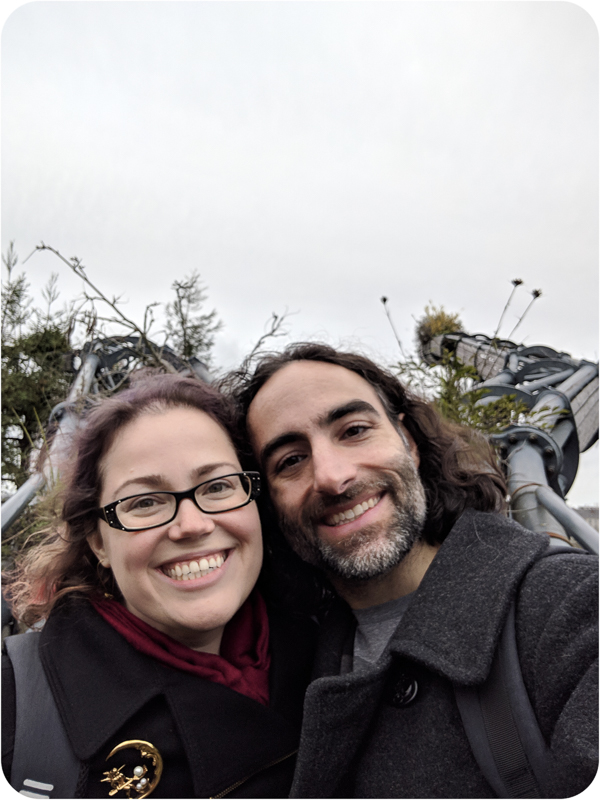 In a branch of The Heron Tree.
In a branch of The Heron Tree.
 With the ominous sky and the elephant’s trajectory, this looks like one of those photos that ends up on the news because someone inadvertently ended up filming their own attack.
With the ominous sky and the elephant’s trajectory, this looks like one of those photos that ends up on the news because someone inadvertently ended up filming their own attack.

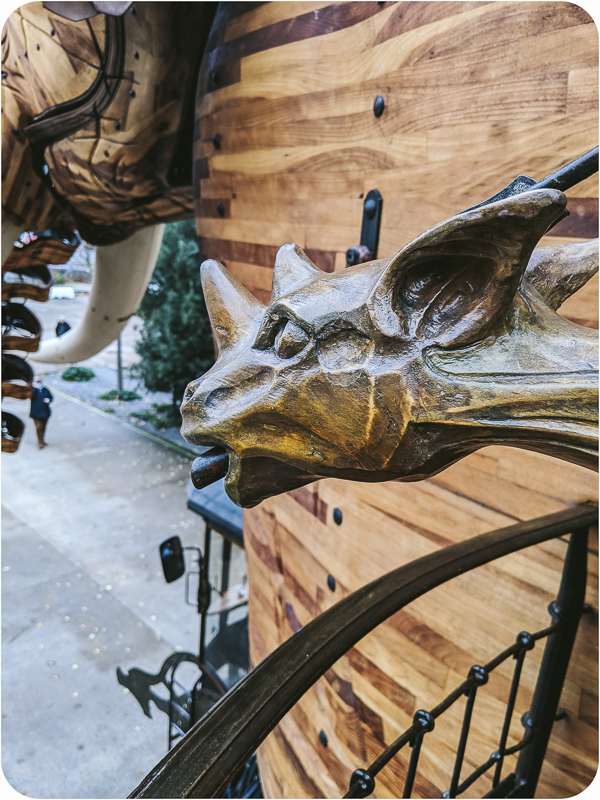 In his blueprint sketchbook, Bestiare, machines et ornements, Delaroziere professed his fondness for gargoyles and other forms of ornamentation “for its ability to introduce relief, to highlight a junction, or to even emphasize certain parts in the architecture.”
In his blueprint sketchbook, Bestiare, machines et ornements, Delaroziere professed his fondness for gargoyles and other forms of ornamentation “for its ability to introduce relief, to highlight a junction, or to even emphasize certain parts in the architecture.”
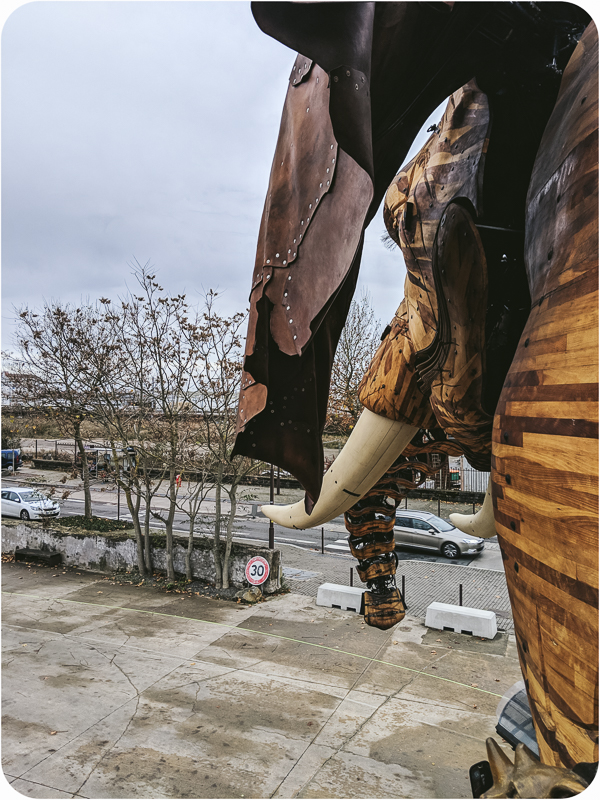
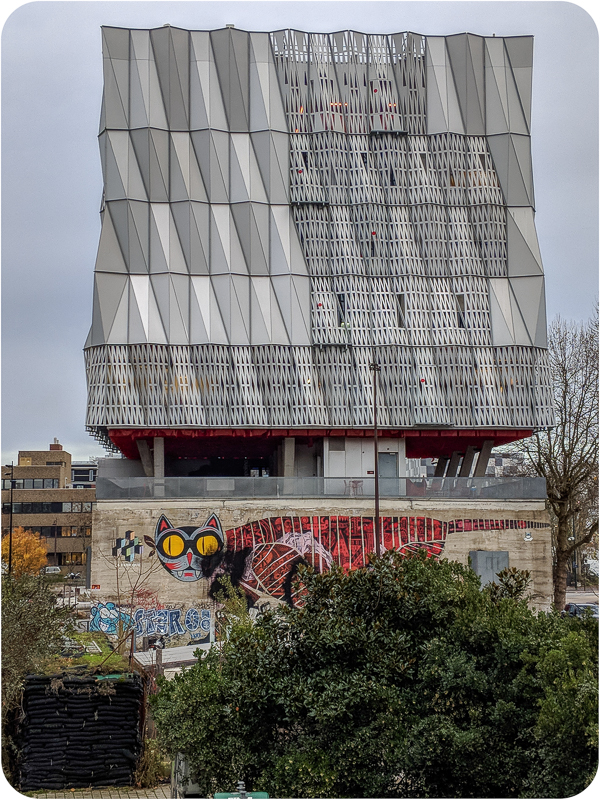 View from the back of Le Grand Elephant.
View from the back of Le Grand Elephant.
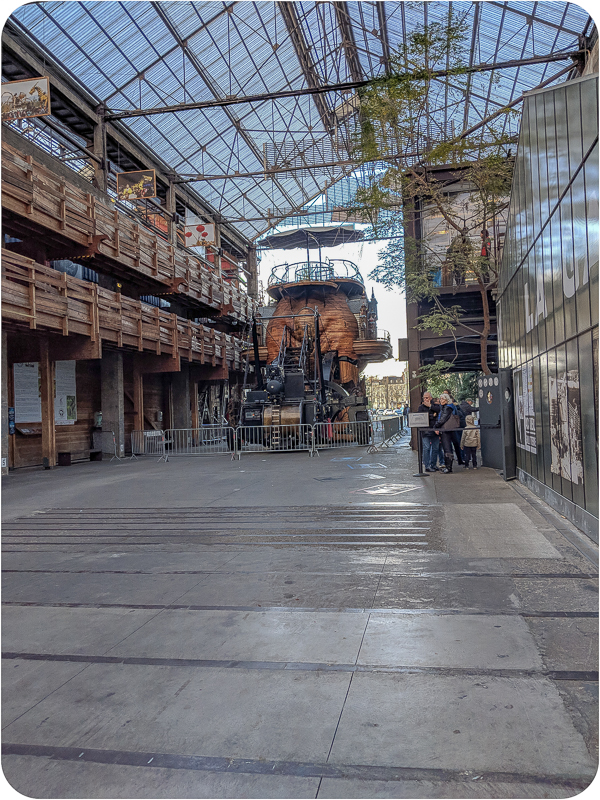
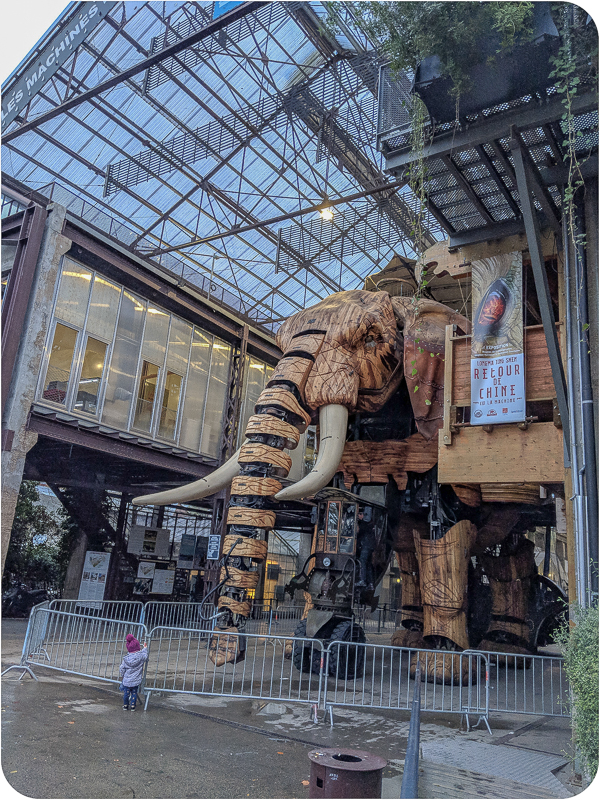
We went on the last ride of the evening, a 45 minute jaunt from behind their gutted and repurposed warehouse building and through it to its indoor resting place for the evening. The vast majority of The Grand Elephant’s controls are in the operator’s cab but riders could wiggle the tail if they chose. I did so choose. At the pace this elephant moves, even if machines become self-aware and go on a murderous rampage, you should still be safe so long as you can keep up a walk. It would be the Michael Meyers of Terminators. After deboarding, in the time it took to walk to the carousel and back, the skies that had alternately rained and threatened to rain some more suddenly took on gorgeous vibrant pinks and purples as the sun set in the most magical way possible.
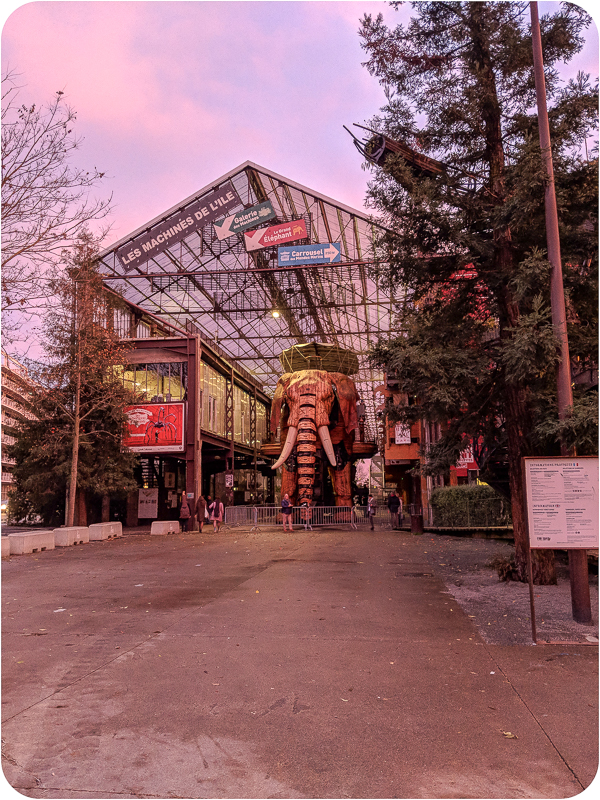
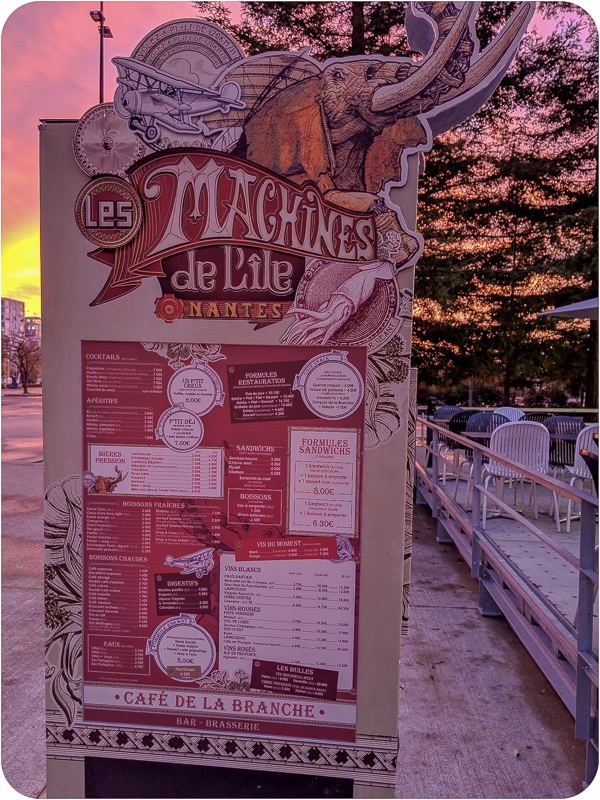
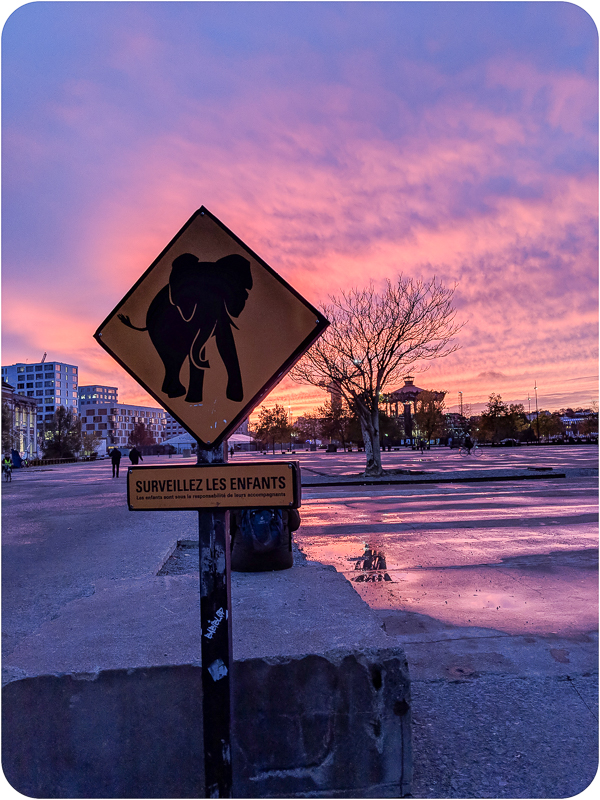 WATCH YOUR KIDS, elephant on the loose!
WATCH YOUR KIDS, elephant on the loose!
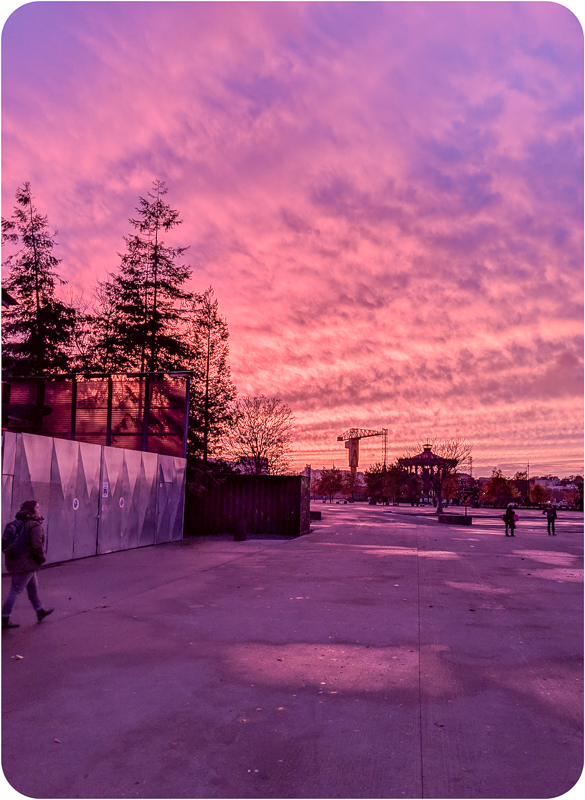

We started our second day on the Isle of Machines at the The Carousel of Sea Worlds (Carrousel des Mondes Marins). When we bought our tickets, we were informed that what we were purchasing was a tour only, with no ride, and while I will admit to being a little disappointed because I always want to ride, I am able to let that go, and while riding is a part of this carousel, unlike most carousels, it isn’t nearly everything.
The Carousel of Sea Worlds is the world’s only three-level carousel, each level representing a different part of the ocean: the floor, the depths, and the surface. In total, the carousel has 35 figures, many with interactive elements, so the rider is not only riding, but puppeteering their mount to imitate life as it circles round and round; spectators witnessing a living mechanical ocean as they wait their turn. I didn’t care if I got a turn or not, but I knew if I did, I could handle the role. You see, when I was in high school, all of the students were administered a career aptitude test to help guide our path in the wide world. I was pretty excited to see the results laid bare, the answer to the great what-should-I-be-when-I-grow-up question spelled out plainly, me in a nutshell. When they finally arrived, my top three career options were, as determined by science: mime, puppeteer, horse breeder.
Mime.
Puppeteer.
Horse breeder.
They may as well have stamped “prepare to be poor” across the top. My parents were inexplicably disappointed in my potential vocational range, and I remained fuzzy on whether federal student aid is available for clown college.
At the Carousel of Sea Worlds, puppeteer doesn’t seem like such a laughable profession, especially with regards to the creation of these intricate and beautiful puppets. As with The Grand Elephant, they are primarily made of natural materials, hand carved and stained wood, color applied in translucent layers to allow the natural characteristics of the wood grain to shine through, steampunk in the nature of their mechanical components: industrial, rugged, weathered. The love and care and attention to form, function, and detail, the elbow grease and ingenuity that went into their creation is evident in every figure and if you are tuned into the kind of labor a work like this takes, it is breathtaking. It brought me to the brink of tears.
The Ocean Floor
Our tour began on the ocean floor. At first, it was essentially a private tour as we were the only two present. Our tour guide spoke English and not only walked us through the carousel but through the history of Nantes, the creation of the Isle of Machines, the kind of labor in general it takes to create each figure, and the unique control mechanics of some. He also took us to a fourth, subterranean level that the three enclosed cars descend into: the submarine, the yellow submarine fish, and the nautilus. As other people joined, our guide told us to pick a mount. I started. “But at the ticket counter they told us we wouldn’t get to ride today?” “Oh, they always say that.”
I selected the squid, and to my delight, not only could I wiggle the tentacles, flutter the fin, and rotate the eyeballs from my seat on the mantle, but I could also release billowing jets of fog into the air, giving it the quality of hazy water, pierced by the headlights installed on some of the figures. Jason didn’t pick one fast enough and was instructed to get into the hermit crab by the tour guide, but accidentally climbed into the second chair of the first crab he saw, the big one with a woman who was clearly not thrilled to have him present as her crab co-captain. There is no language barrier that her look of confusion and irritation could not cross. Once Jason was directed to the correct crab, our ride/puppeteering experience began. Now that I’ve boasted of my natural talents in puppetry, I’m sure you expect me to tell you that I’ve been offered a full time job in Nantes but the fact of the matter is that artistry such as mine is sometimes overlooked and it may take them finding my blog before they reach out and unlock my destiny.
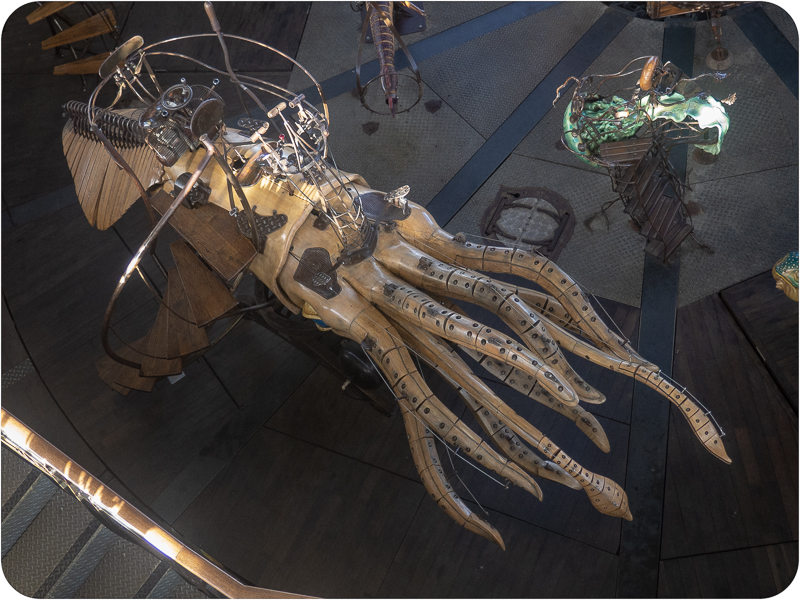
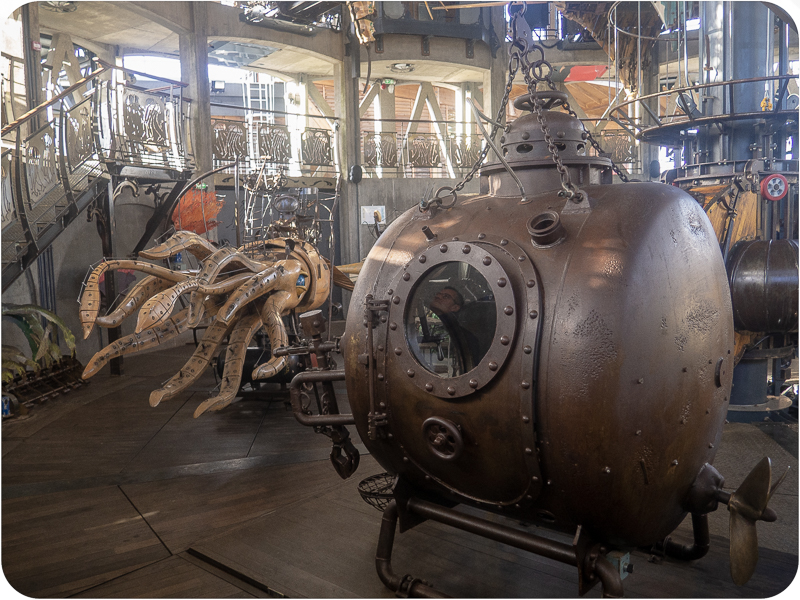
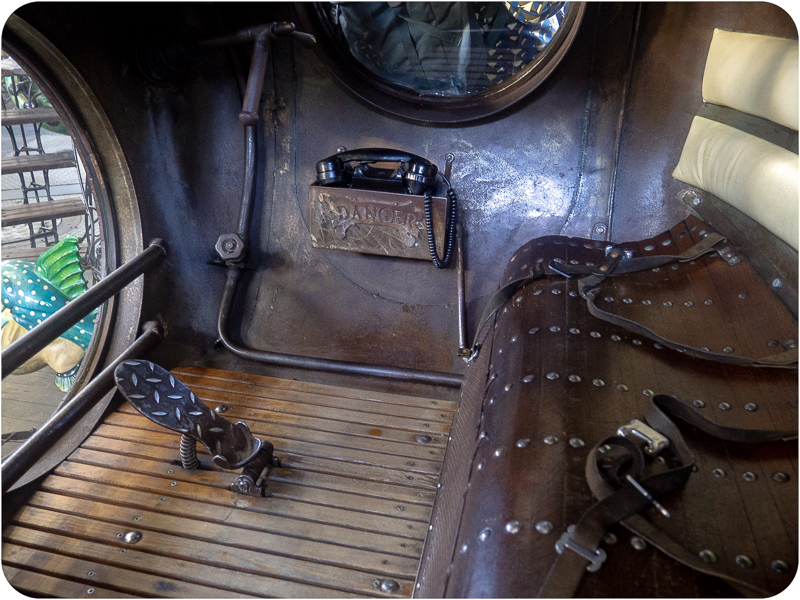
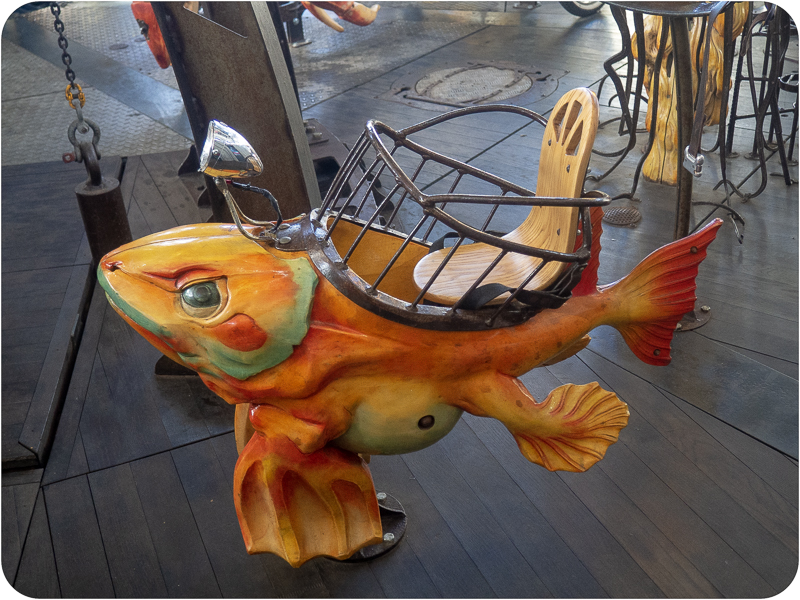
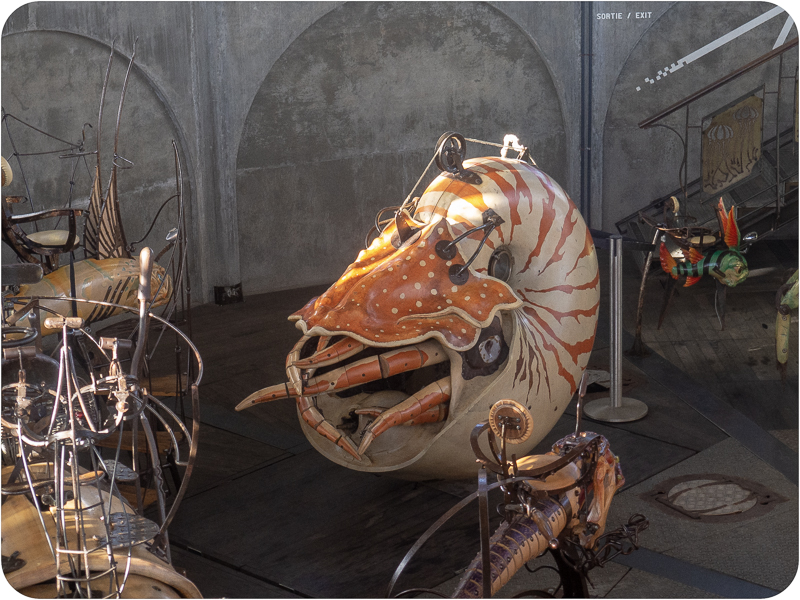
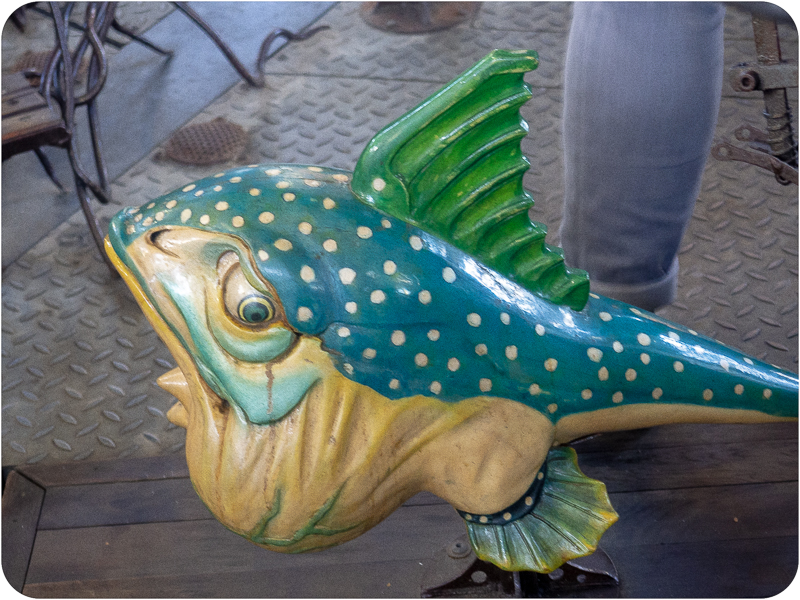
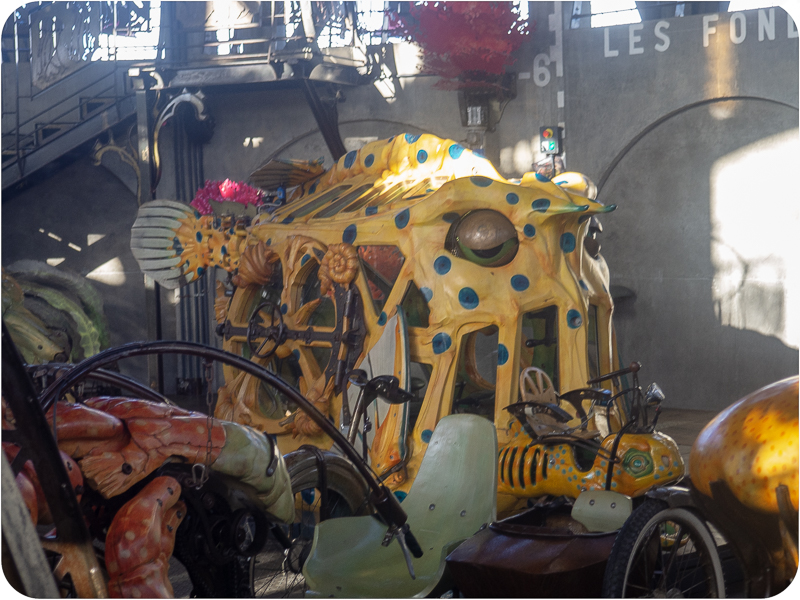
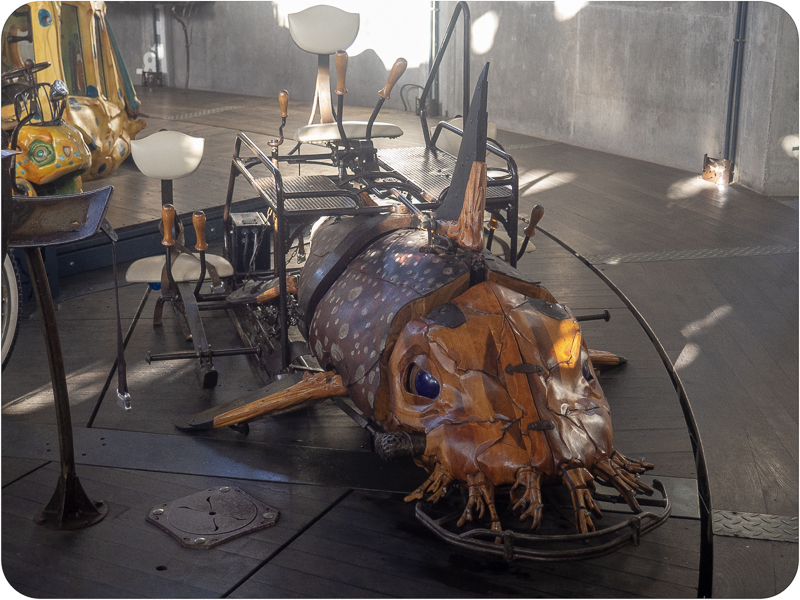
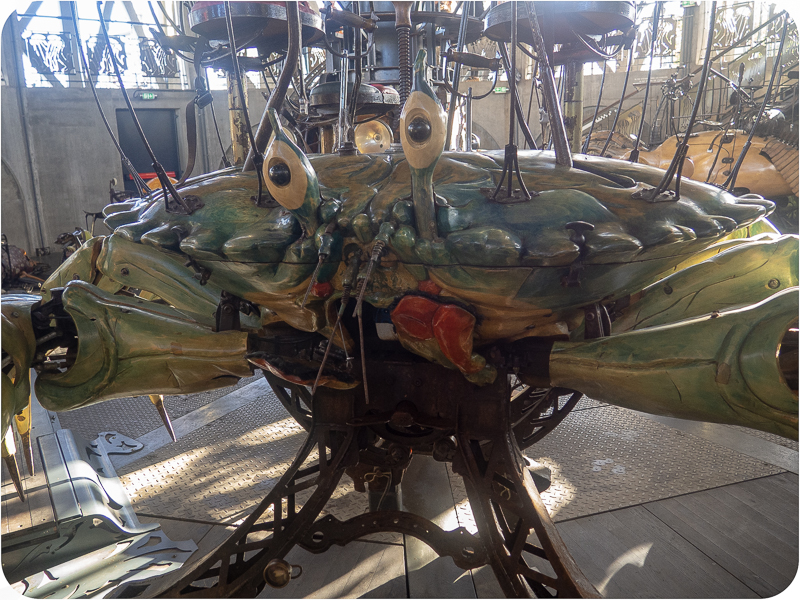
The Depths
The tour essentially ignored this level but I very much would have liked to ride in the pirate fish, ideally while wearing a pirate costume.
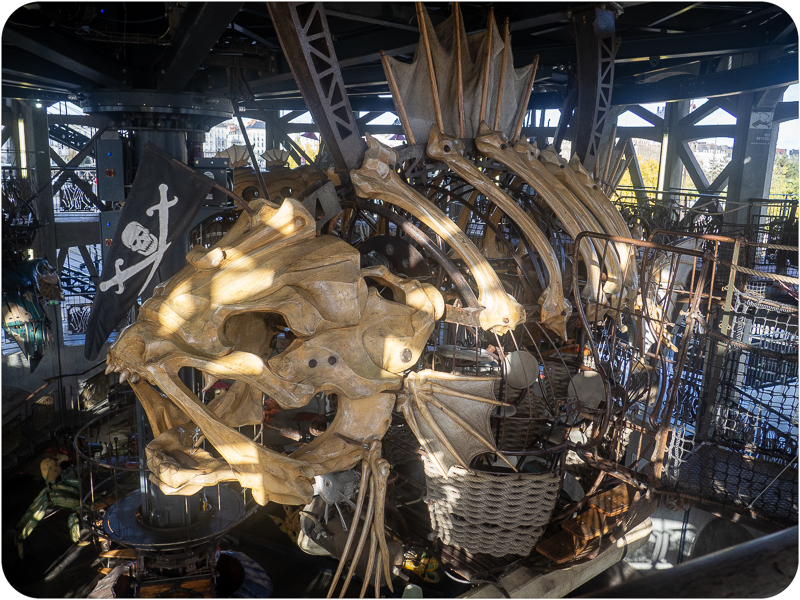
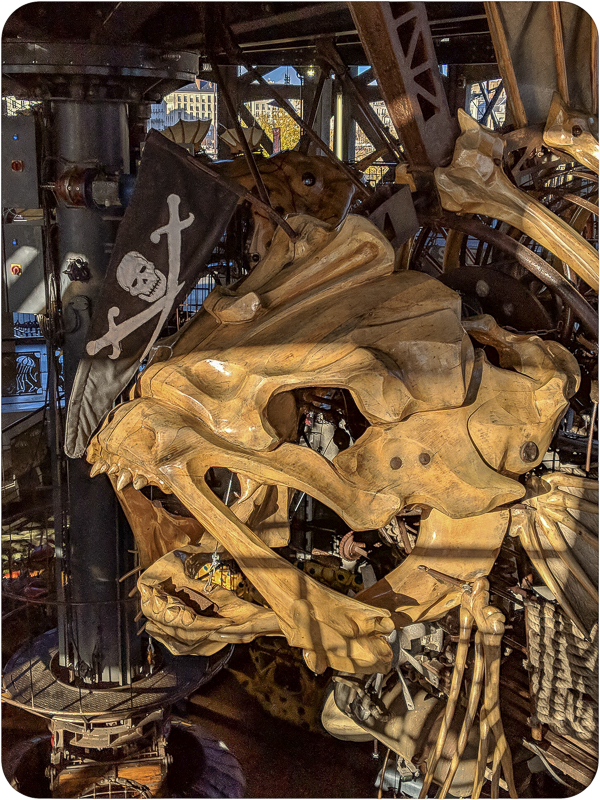

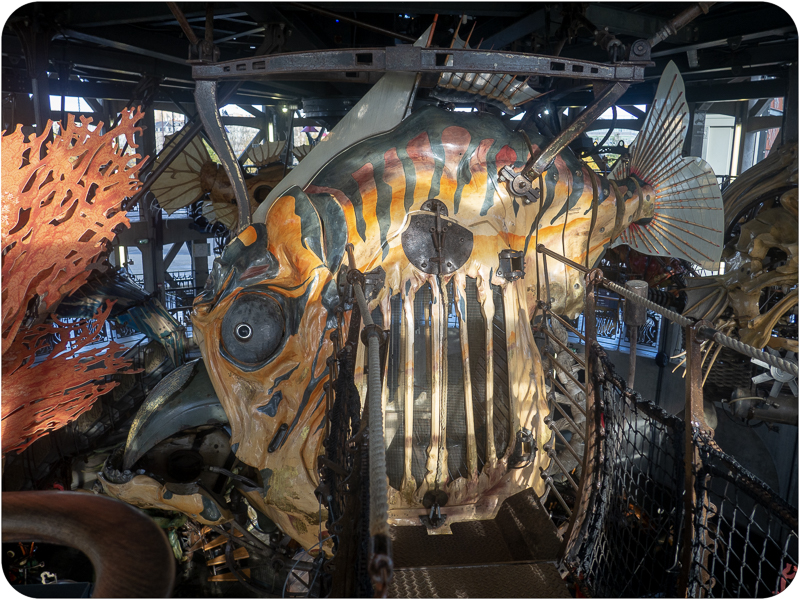
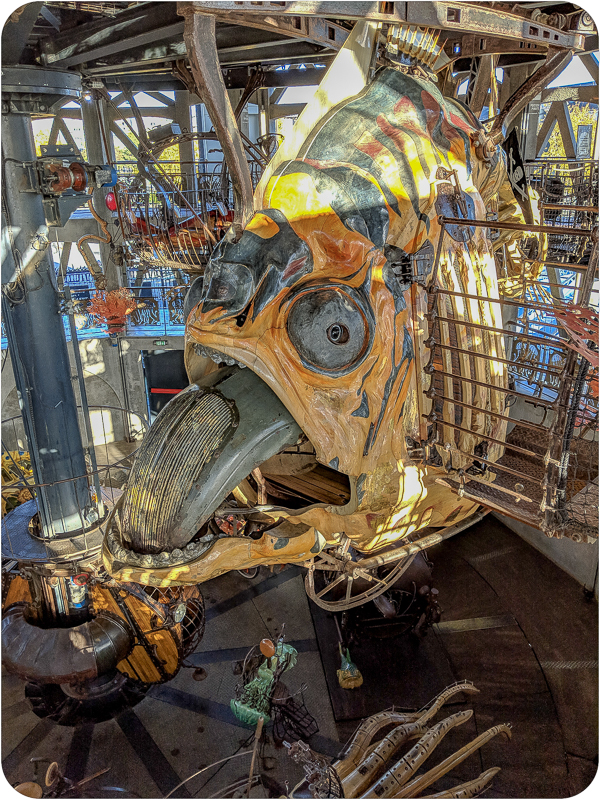

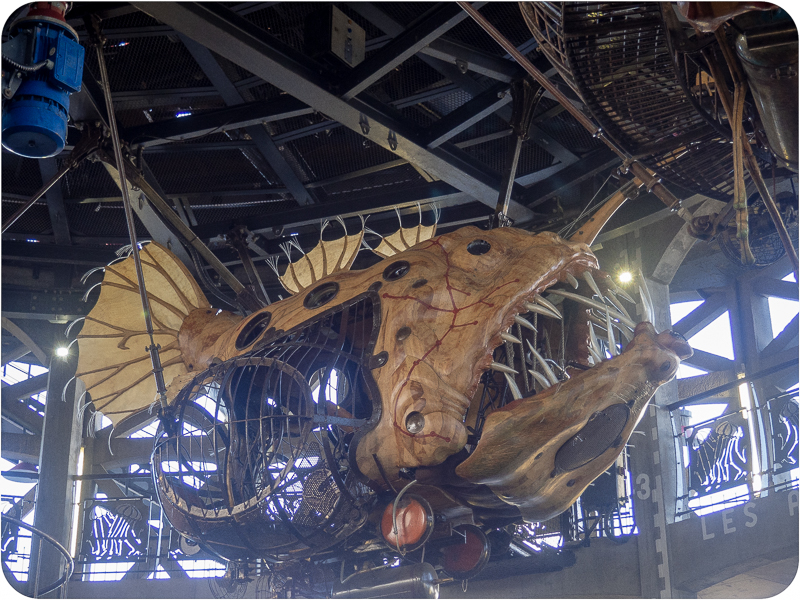
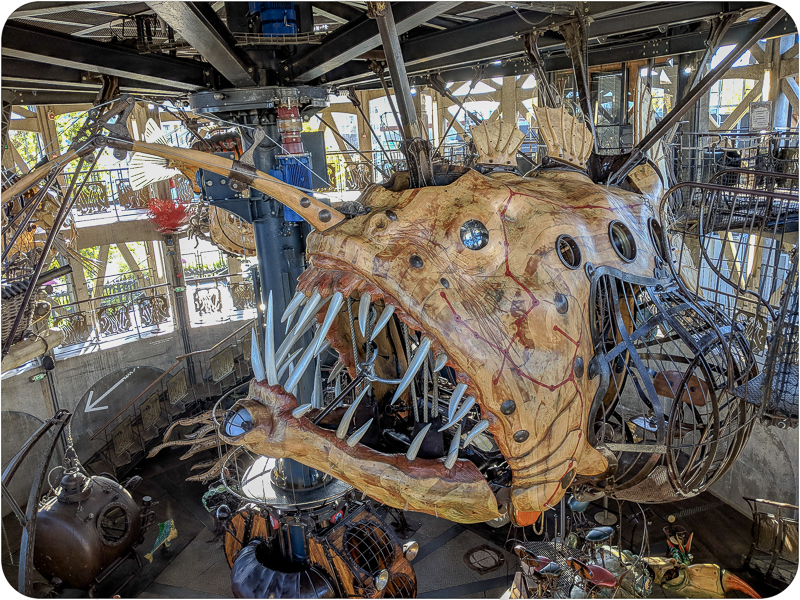
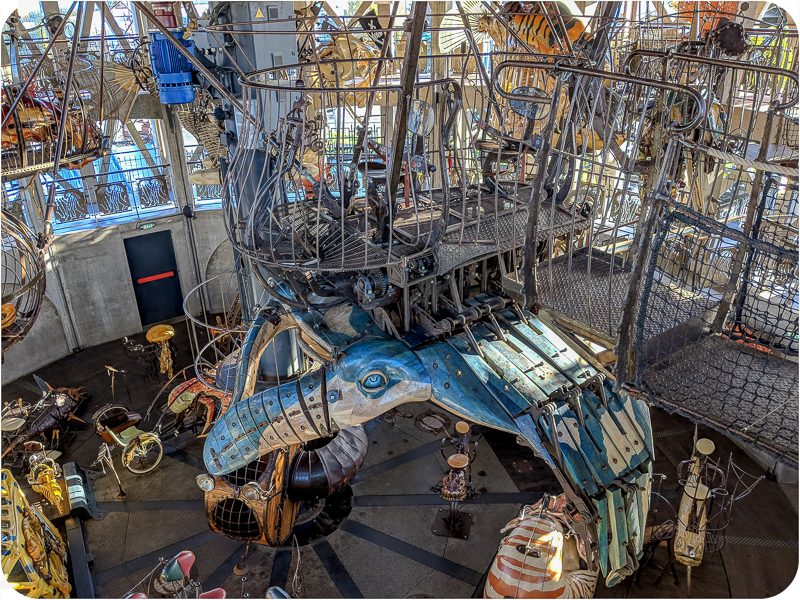 The wings of the manta ray flapped whenever the carousel was in motion, one of few automatic animations not requiring the hand of a puppeteer.
The wings of the manta ray flapped whenever the carousel was in motion, one of few automatic animations not requiring the hand of a puppeteer.
The Surface
On the surface level, we were sent off with another tour group. This guide spoke French exclusively which I do have to expect while in France and not get tetchy about it but it was hard to go from a tour where I felt like I was learning a lot to not being able to understand at all. The important thing is that we got to ride again! This time, Jason and I rode together in a fish-boat. I sat in the front and controlled its fishy head: opening and closing the jaw, moving the eyes, swinging back and forth to make the boat appear it’s swimming. Jason rode in back and manned the fins, horn, and cannon, which was rigged to a drum for a satisfying boom.
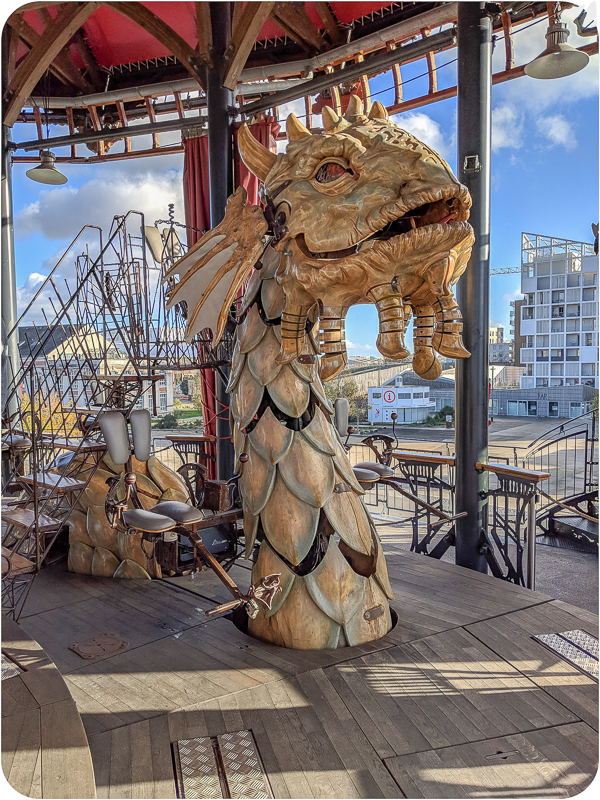
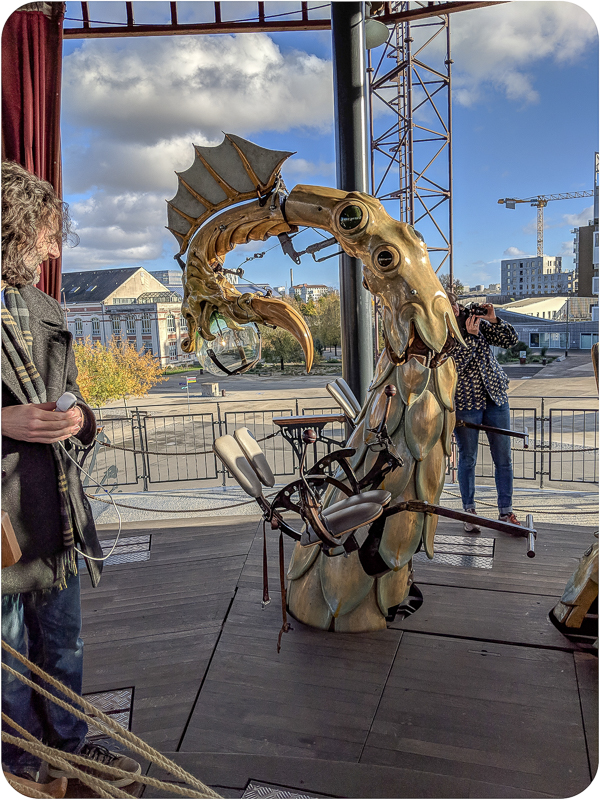
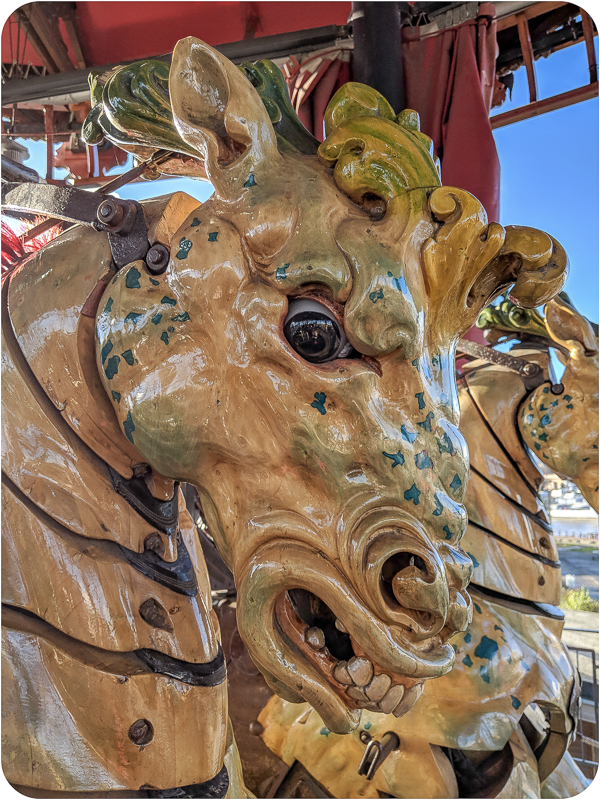
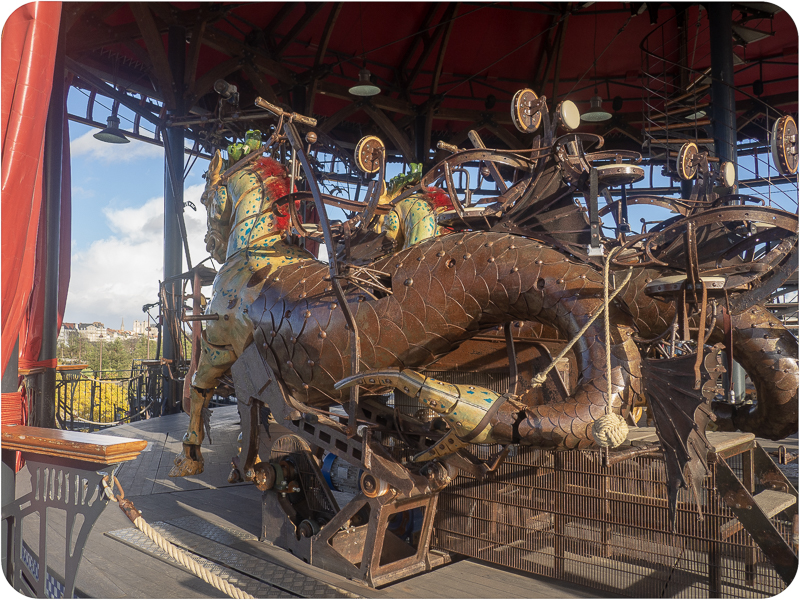
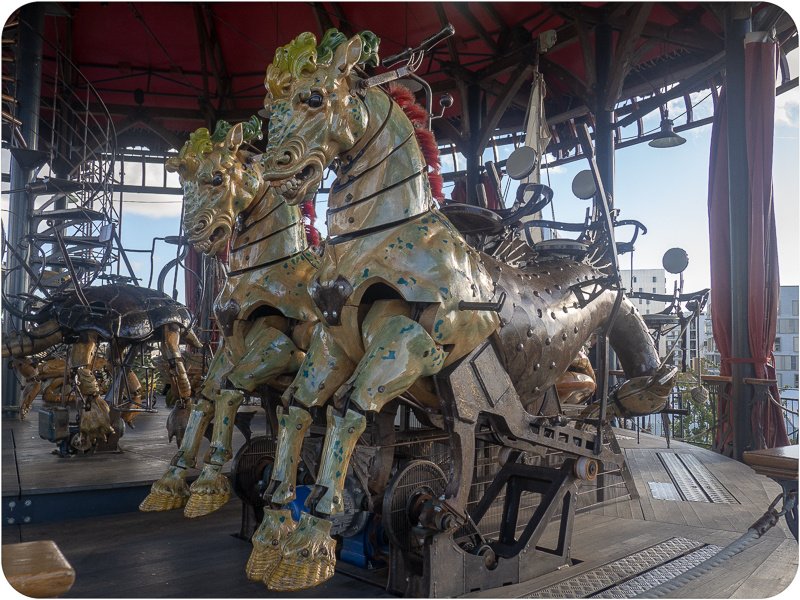 Inspired by the six horse chariot sitting over the dome of the main gate of the palace in St. Petersburg.
Inspired by the six horse chariot sitting over the dome of the main gate of the palace in St. Petersburg.
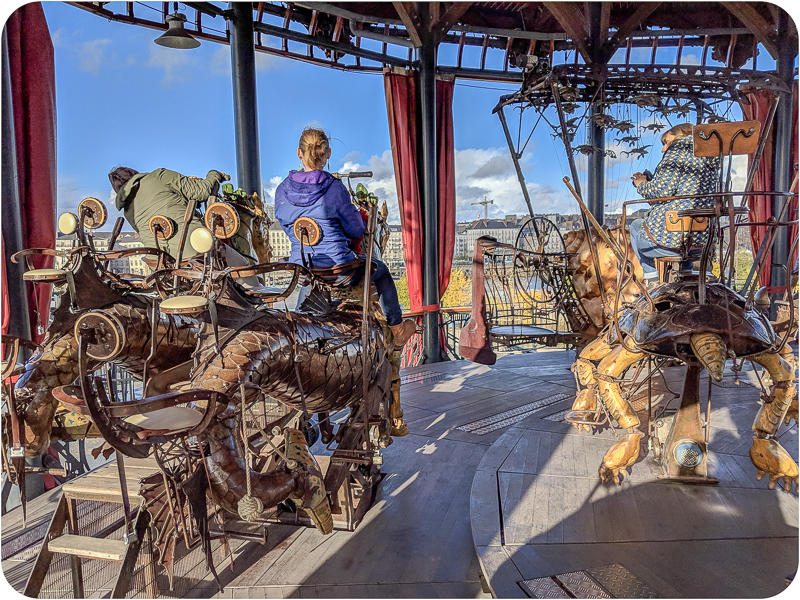
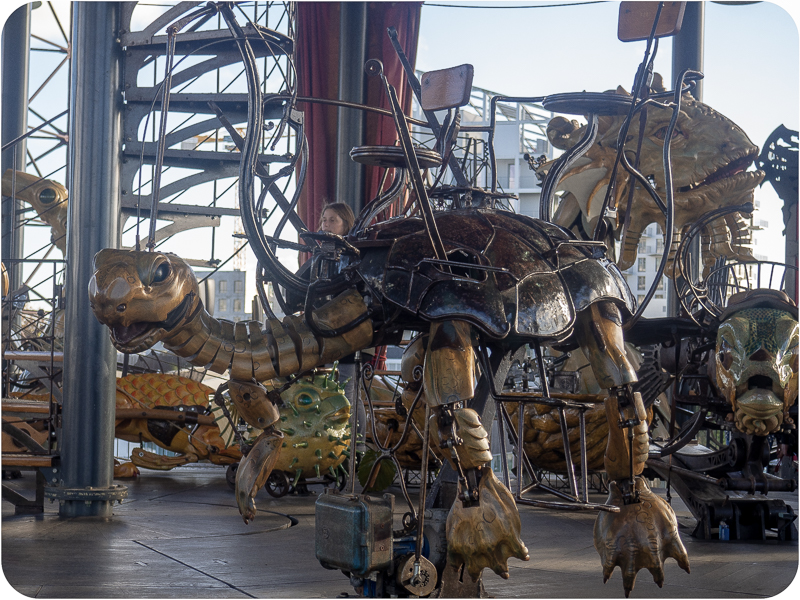
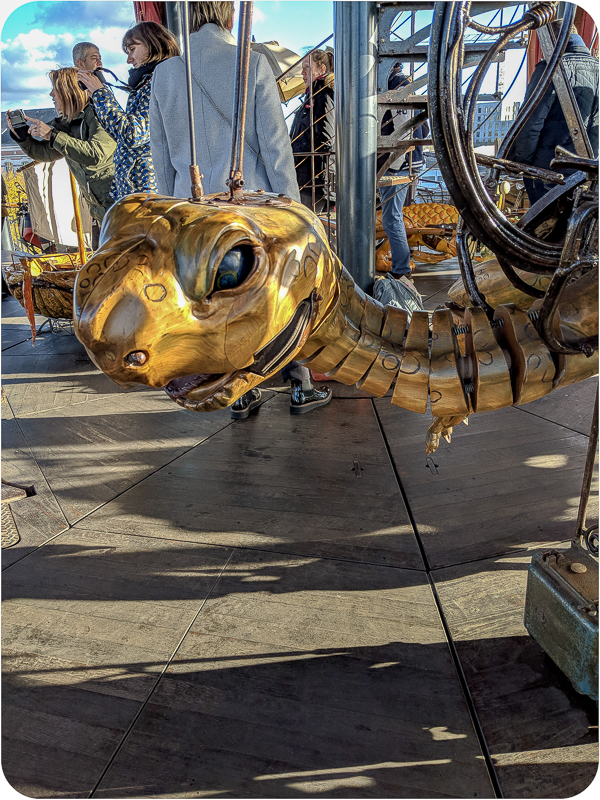
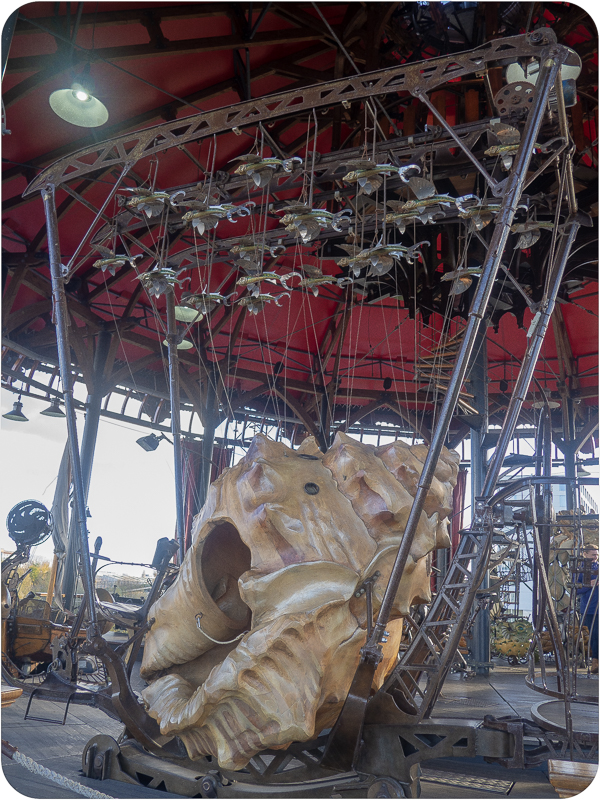 When the carousel is in motion, the fish “fly”.
When the carousel is in motion, the fish “fly”.

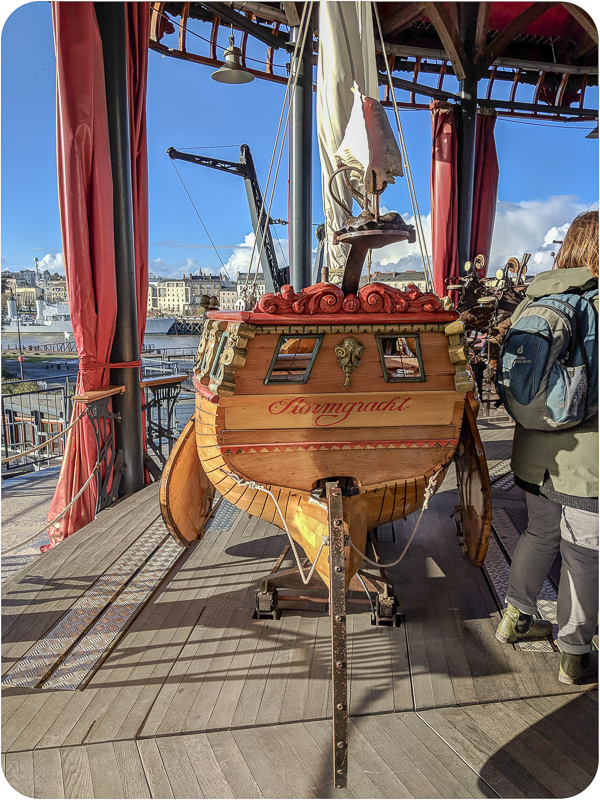 Our fishboat.
Our fishboat.
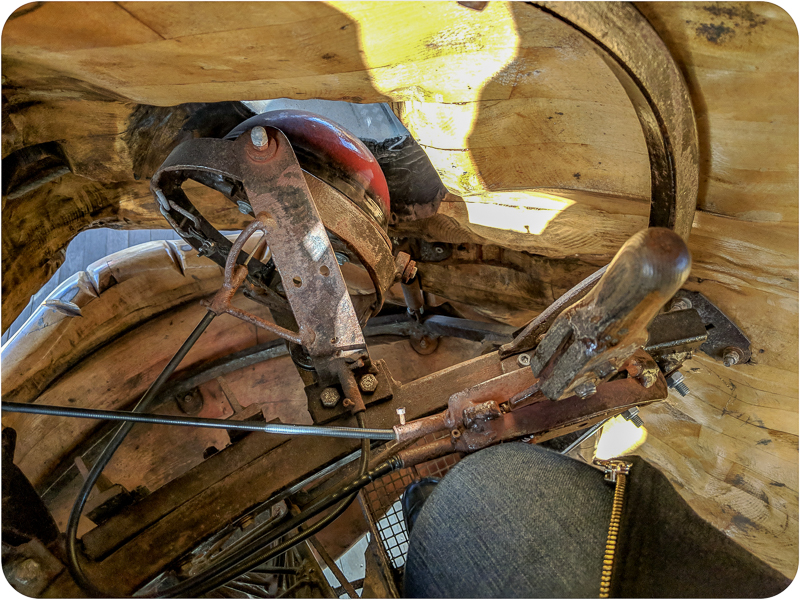 The view from inside the head of a fishboat.
The view from inside the head of a fishboat.
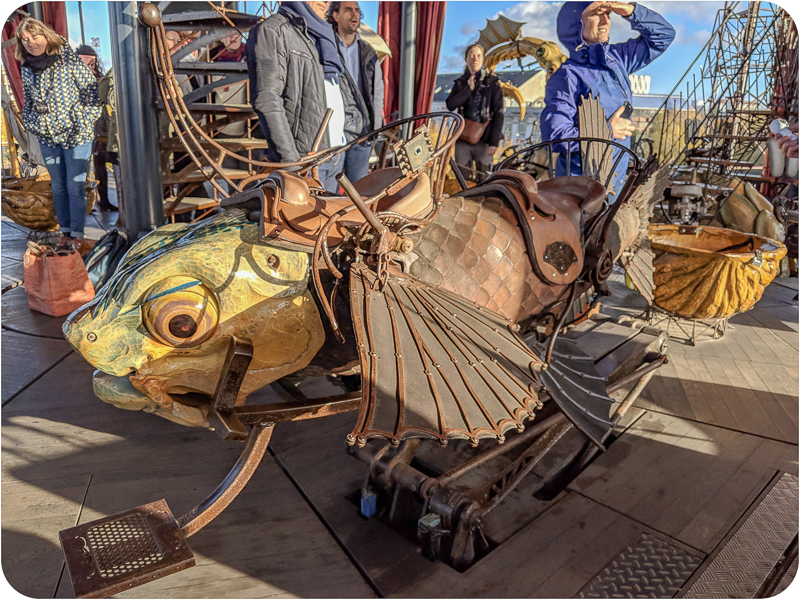

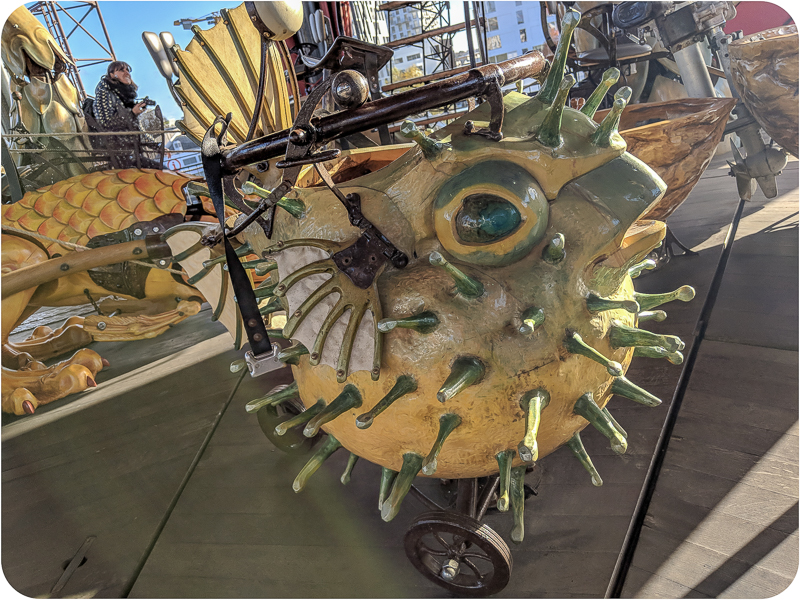
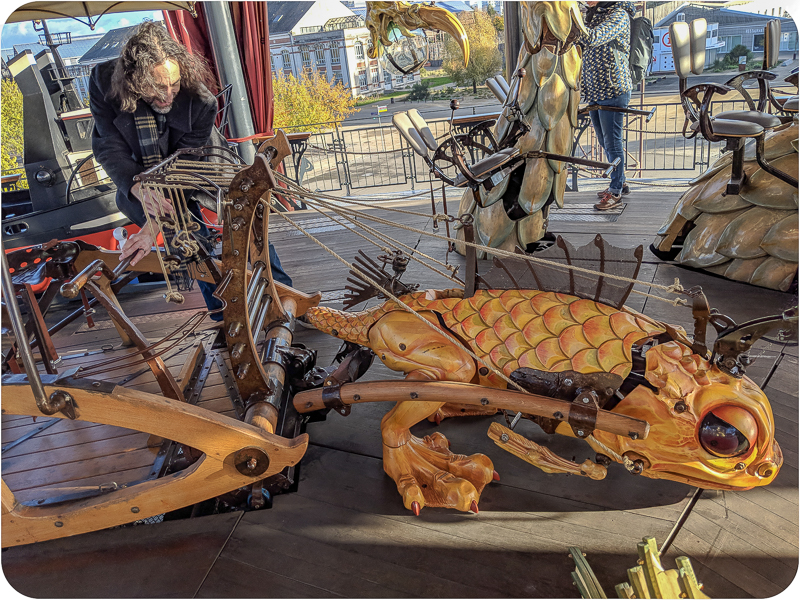
(Best viewed full screen.)
I couldn’t possibly pick a favorite. They’re all too wonderful.
As we finished the tour, who should trumpet around the corner but Le Grand Éléphant, depositing riders at Les Mondes Marins and providing one heck of a photo op?
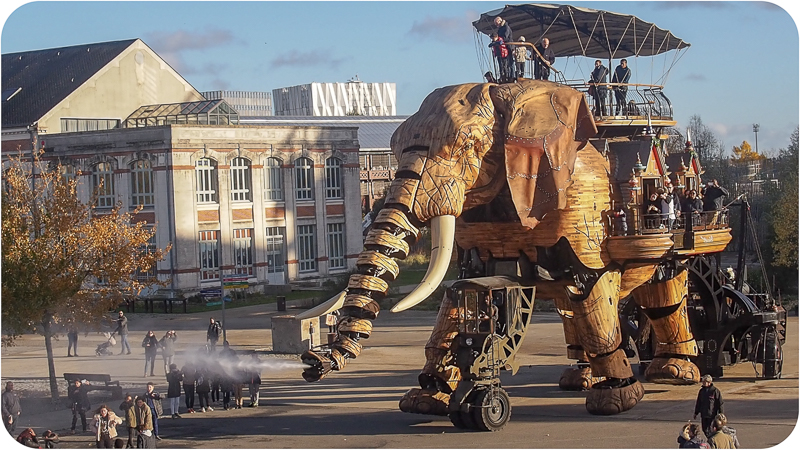
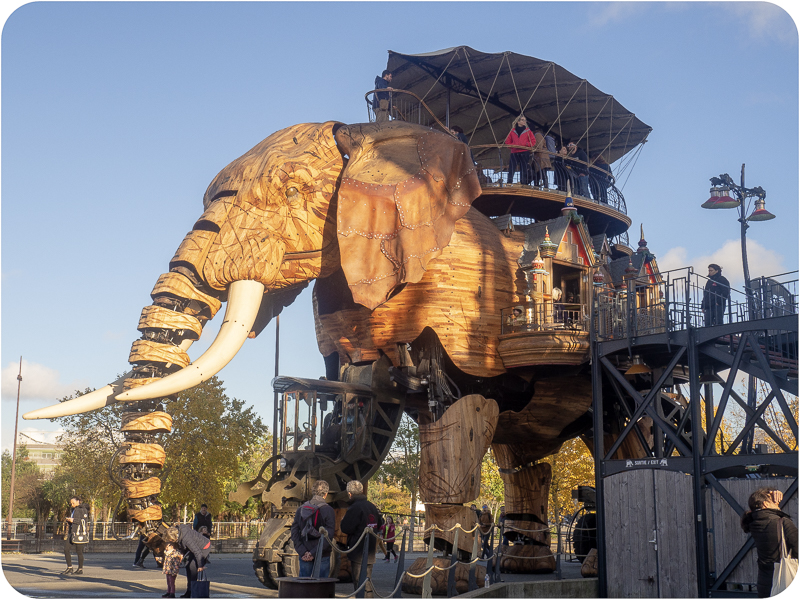

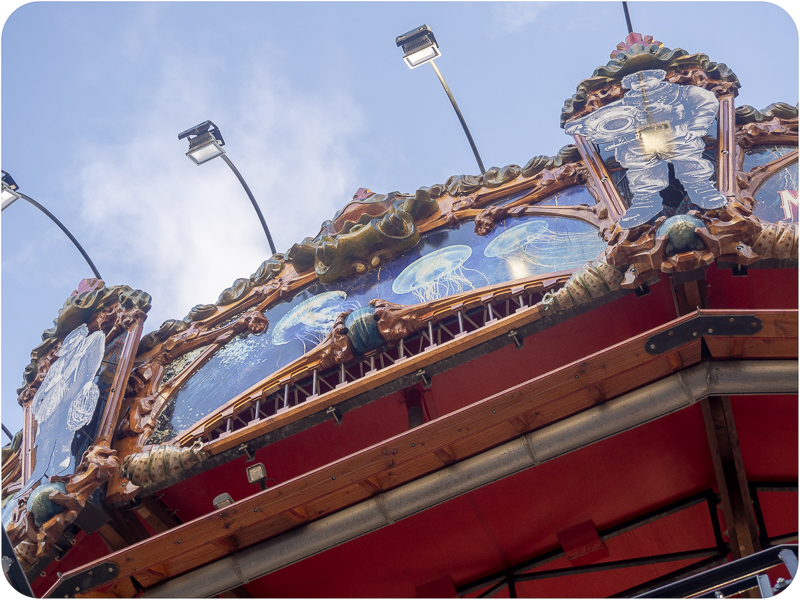
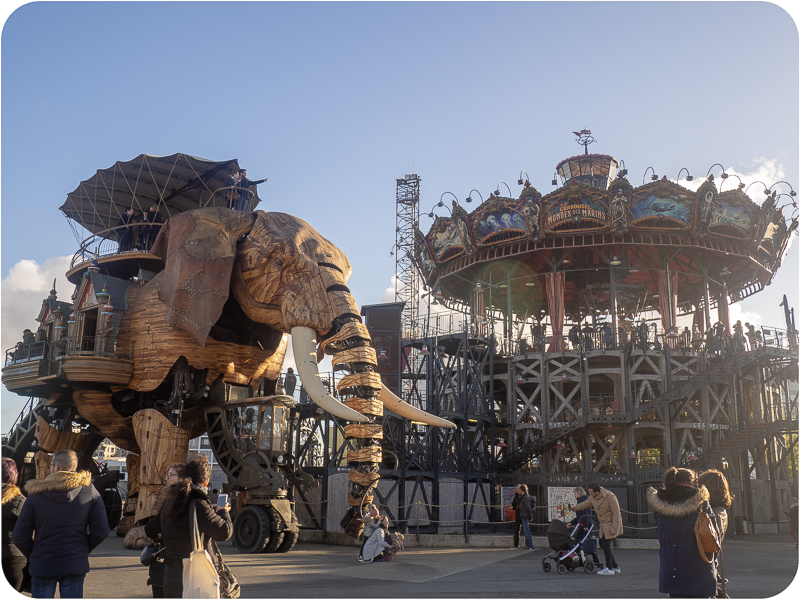
Last but not least, we visited The Gallery of Machines (La Galerie des Machines), where they display prototypes and have their test laboratory. During my visit, they were testing insects, birds, and plants for The Heron Tree.

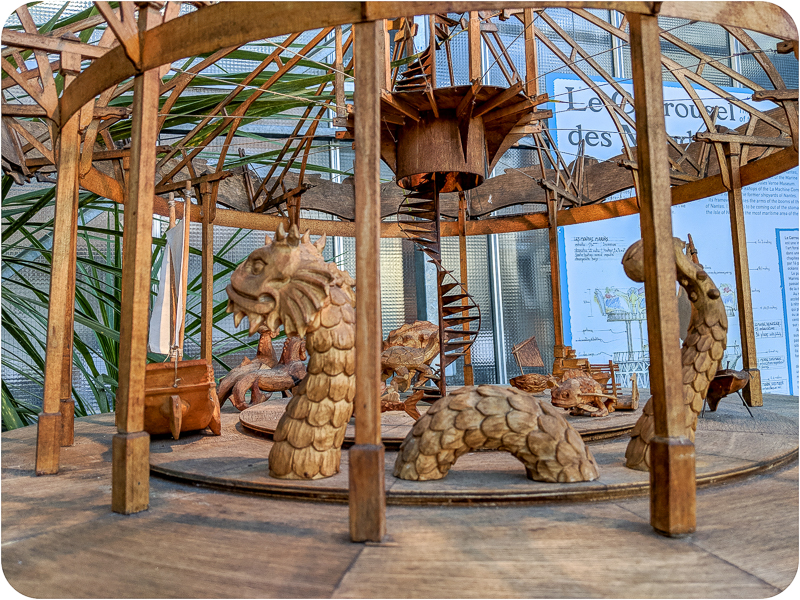
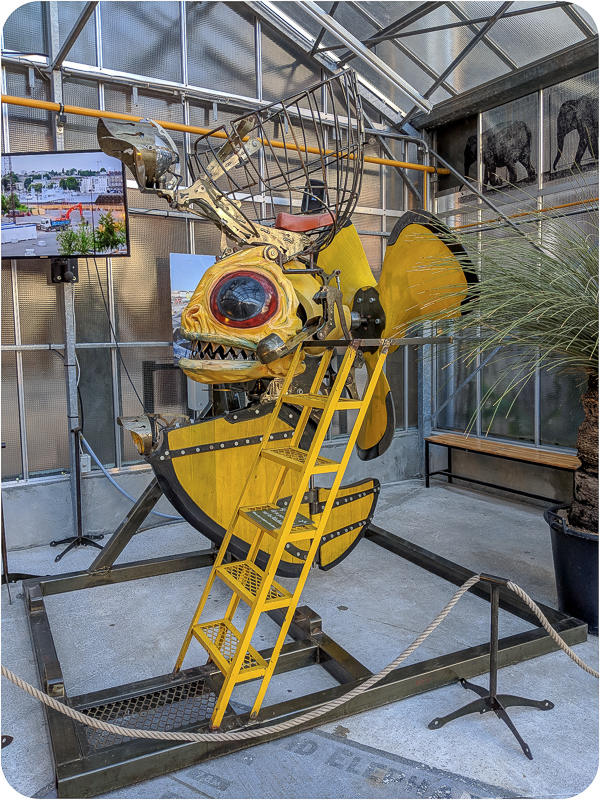

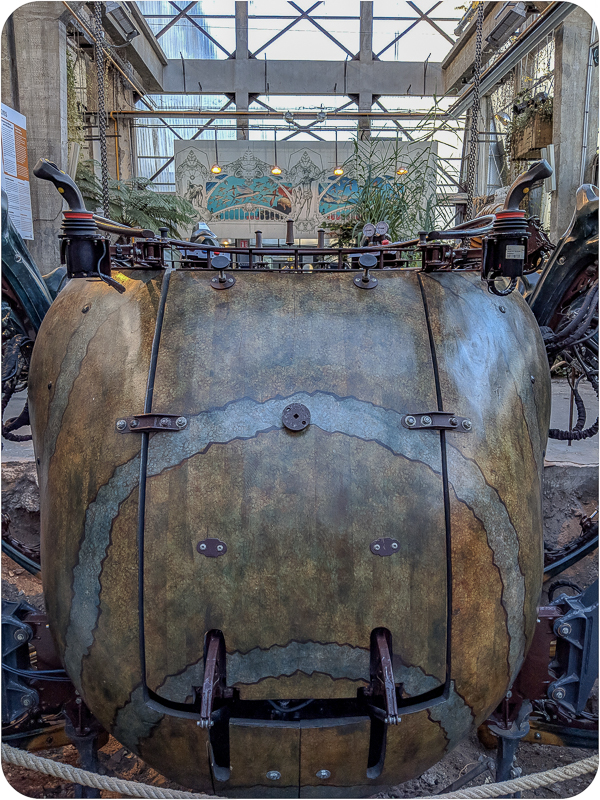 Spider butt has a face.
Spider butt has a face.
Based on the way the spider dropped from the ceiling, I really, really hoped it would pick up the ant in a challenge for the title of “world’s largest claw machine“.
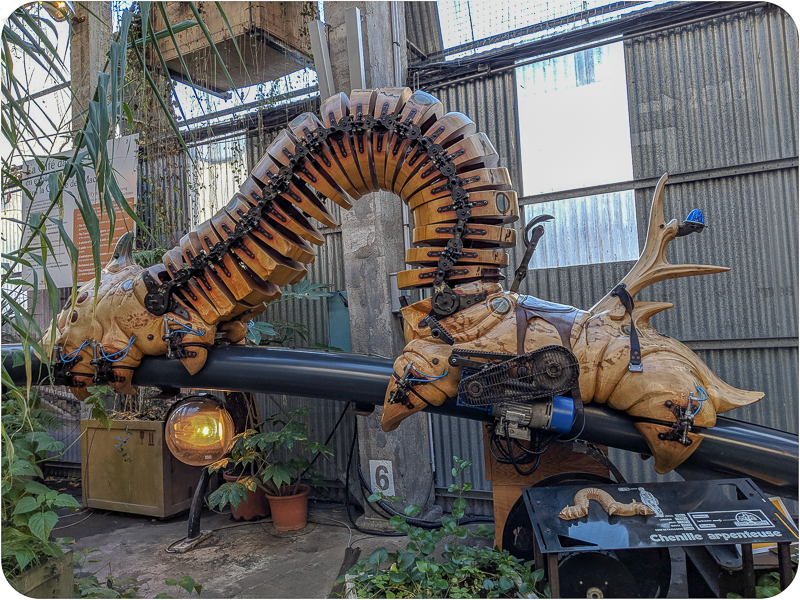 I love everything about this.
I love everything about this.
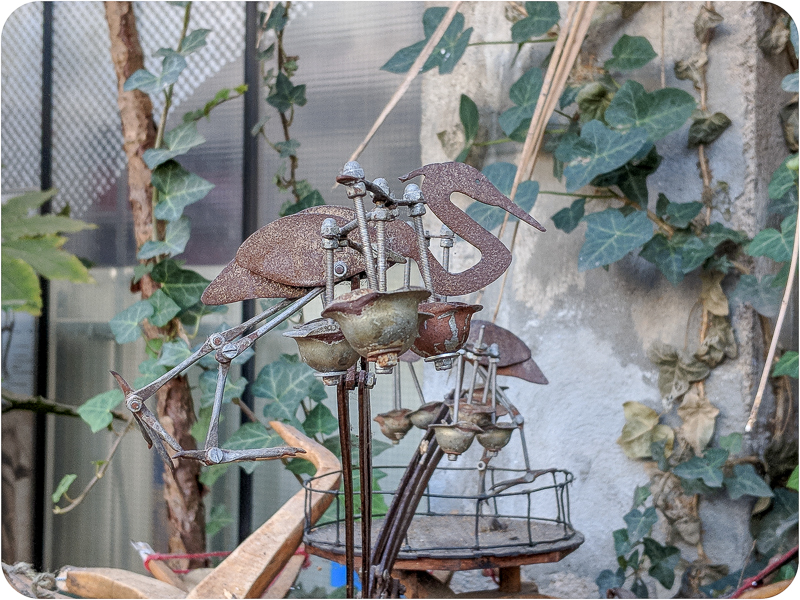

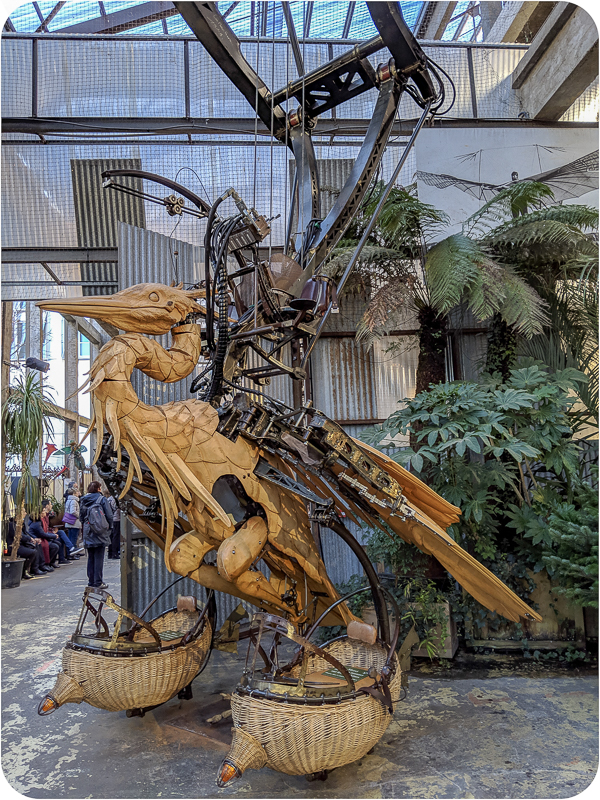 Heron prototype for l’Arbre, when scaled up the plan is for it to be able to carry forty people rather than four.
Heron prototype for l’Arbre, when scaled up the plan is for it to be able to carry forty people rather than four.

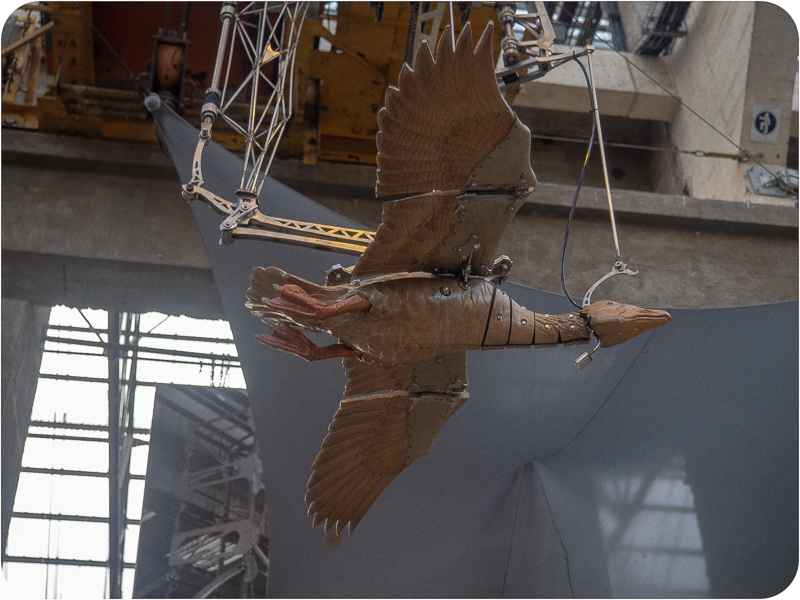
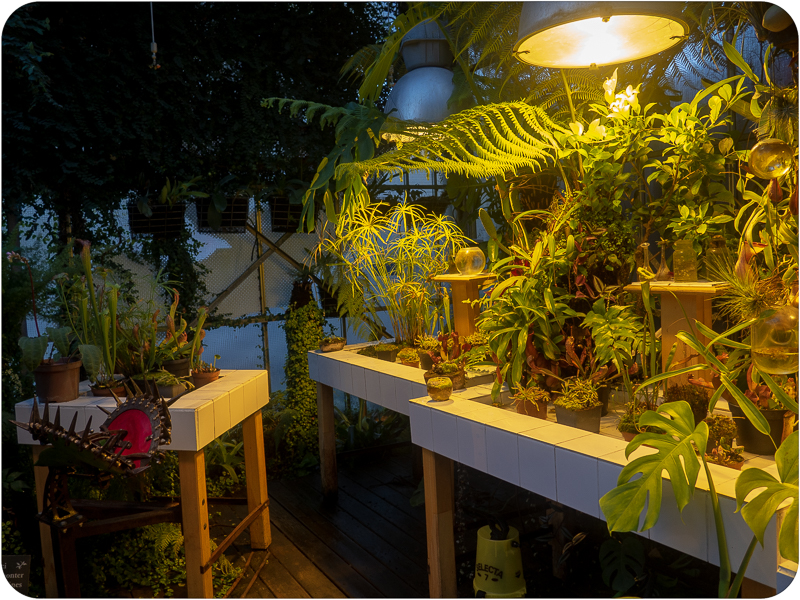
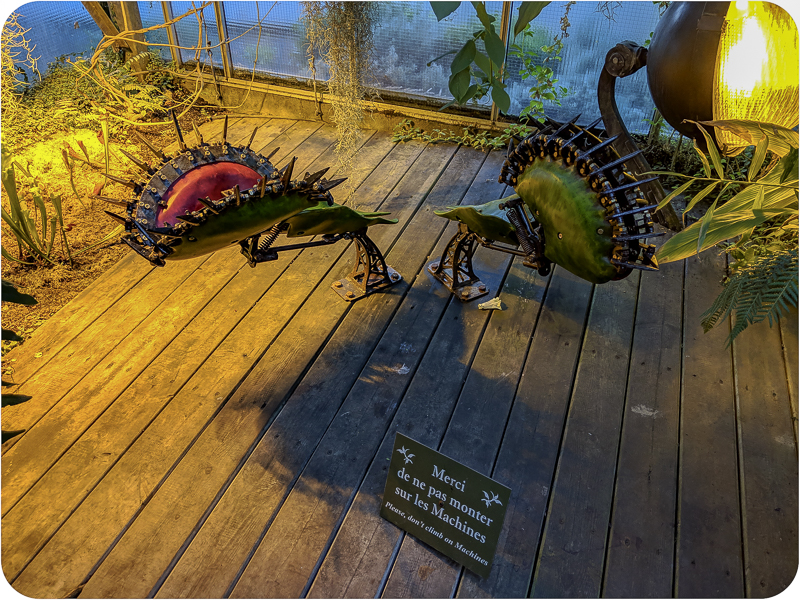 This venus flytrap looks like it’s out to get revenge on Mario.
This venus flytrap looks like it’s out to get revenge on Mario.
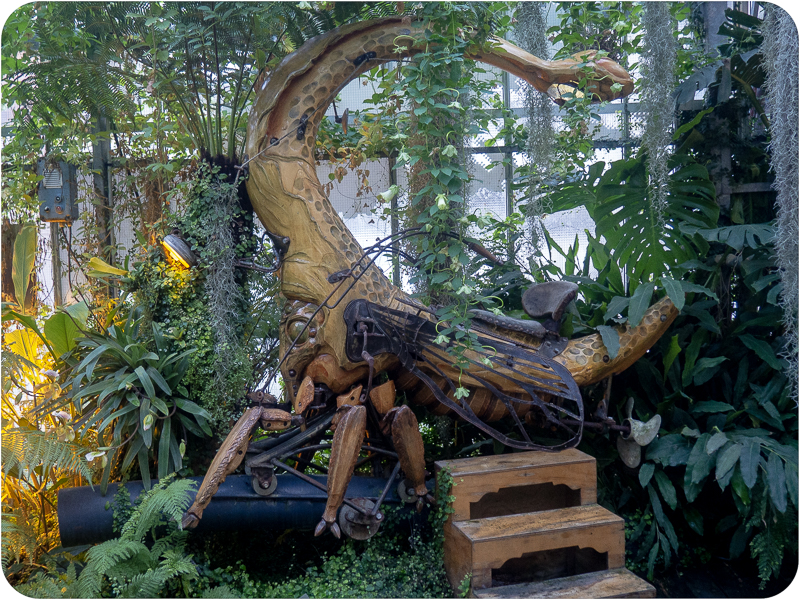
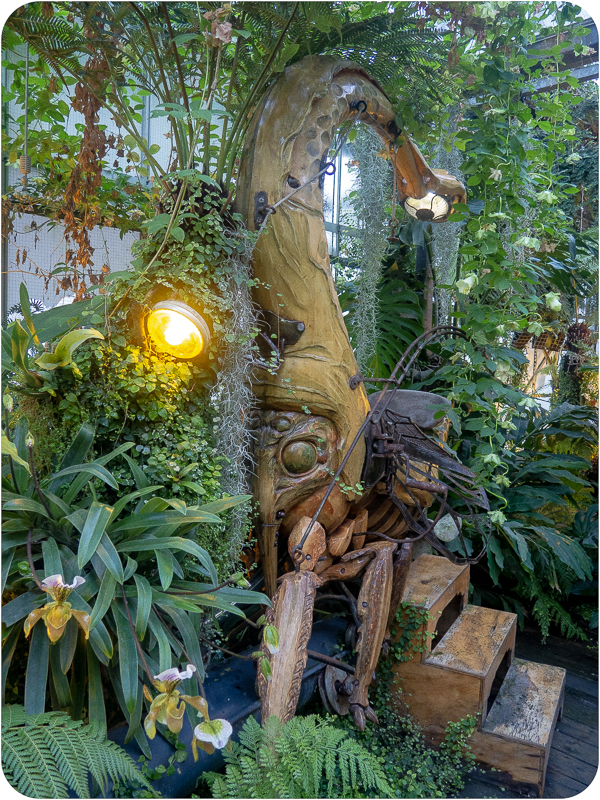
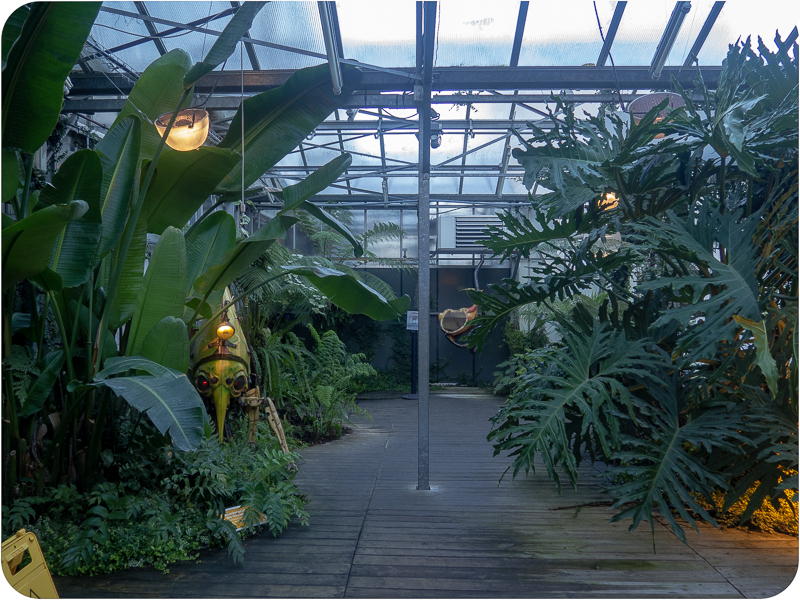
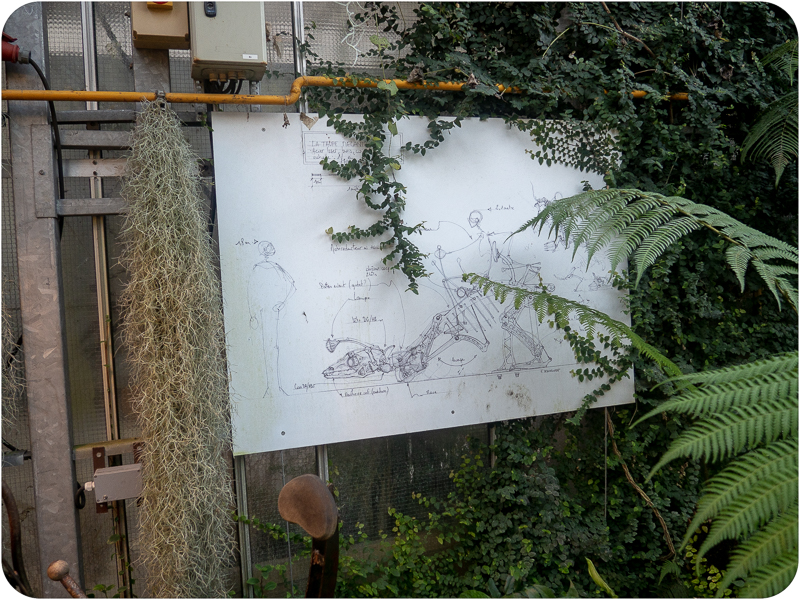
What Les Machines has accomplished in twelve years is a testament to the power of imagination, hard work, and creative arts funding. The Heron Tree will be their most ambitious project yet; I can’t wait to see them soar.

